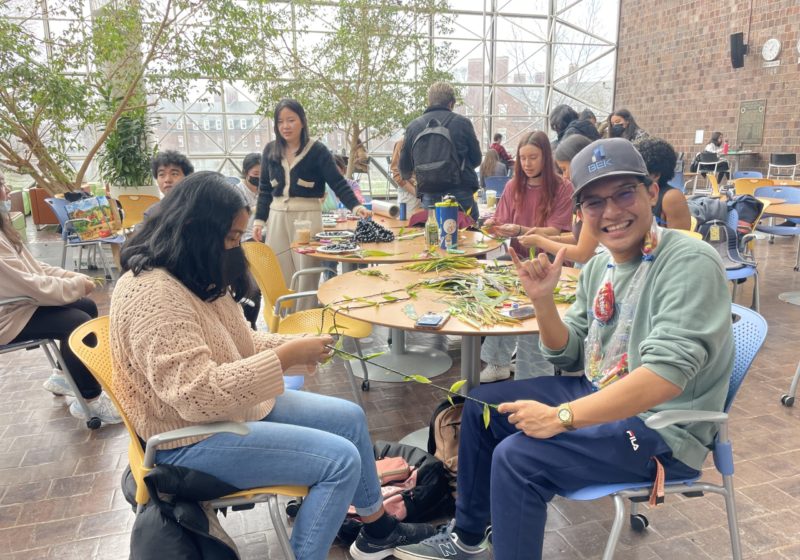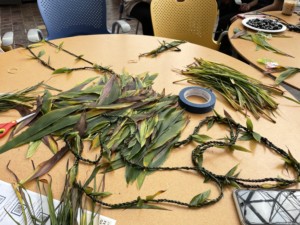This past Friday I attended the Hawaiian Interest Club’s lei-making event in Hirst Lounge. I had never made a lei before, nor have I ever visited Hawaii, so my experience with the entire culture of the islands was limited to social and pop media. When I, along with probably most other people, picture a lei, I imagine a thick chain of beautiful, colorful flowers. As La’i Yuen, junior and Vice President of the Hawaiian Interest Club, explained to me, there are actually many different types of leis. The flower leis are often made of orchids or plumeria flowers, while the ones we made are crafted entirely from ti leaves. In addition to leis that are worn around the neck, there are also wili leis, which look like flower crowns and are worn on the head.
Yuen also talked to me about the function of leis in Hawaiian culture. “Leis are meant to be given,” she said. “They’re given on birthdays, graduations, promotions, ceremonies, weddings. Anything, really, that symbolizes any sort of accomplishments, or to show appreciation for someone.” So, what are you supposed to do with a lei after you receive one? Yuen explained that leis are not meant to be thrown away; they should instead be left outside to return to nature. She also mentioned that in Hawaii, the first day of May is a celebration called Lei Day, which the club hopes to do an event for in the future.
There are a few main ways to make a lei, Yuen explained. The first is called hilo (to twist), which is the “staple one everyone knows,” while another is called kui (to string). You can also sew or bind a lei. We used the hilo method to create our ti leaf leis after spending about half an hour de-boning the leaves (cutting them in half and removing the stem). We were interrupted by a fire alarm in Wilson Commons, which provided us with some much-needed cold air after baking in the hot sun of Hirst. When we returned, we finished cutting the last of the leaves and began creating our very own leis.
There was a mix of total beginners (like myself) and experienced lei-makers who grew up on the islands. With a pen trapped between my knees, I started the lei-making process by twisting one leaf together very tightly and bending it around the pen. I then twisted the two strands together in the opposite direction. The tricky part was adding new leaves, which involved wrapping the new leaf around the old one and twisting it until it was fully incorporated into the lei. When twisted like this, the ti leaves released some sort of juice, which was unhelpful while slippery but helped hold all of the twists together once it became sticky. Once the lei was long enough, we were able to tape the beginning to the table, which made the process a lot easier and brought me back to my friendship bracelet-making days. It took me a little while to get the hang of it, but I eventually completed my lei!
I had a great time learning about leis and making my own with the Hawaiian Interest Club. Don’t sleep on the Weekend Highlights email — you never know what opportunities to learn about cultures beyond your own you might be missing!






